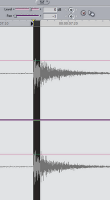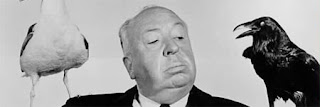 Premiere Pro CS5 Tips, Tricks, and Notes is a substantial follow-up to Pete Bauer’s recent DVinfo.net article Adobe Premiere Pro CS5 Six Months Later:
Premiere Pro CS5 Tips, Tricks, and Notes is a substantial follow-up to Pete Bauer’s recent DVinfo.net article Adobe Premiere Pro CS5 Six Months Later:December 8, 2010
Premiere CS5 Tips, Tricks, and Notes
 Premiere Pro CS5 Tips, Tricks, and Notes is a substantial follow-up to Pete Bauer’s recent DVinfo.net article Adobe Premiere Pro CS5 Six Months Later:
Premiere Pro CS5 Tips, Tricks, and Notes is a substantial follow-up to Pete Bauer’s recent DVinfo.net article Adobe Premiere Pro CS5 Six Months Later:March 8, 2010
AE performance tip: Don't overschedule your processors
 Todd Kopriva is offering another After Effects performance tip: Don't overschedule your processors,
Todd Kopriva is offering another After Effects performance tip: Don't overschedule your processors, 'This advice is similar in spirit to the advice given in a previous post, "Performance tip: Don't starve your software of RAM."
In many cases, performance is improved by using fewer than the maximum number of processors for Render Multiple Frames Simultaneously multiprocessing, even when you have enough RAM for all of the processors.
After Effects is a multithreaded application that can also use other forms of multiprocessing beyond just Render Multiple Frames Simultaneously multiprocessing, and it is possible for the processors to become "overscheduled" if these threads are competing for the same resources as the background processes used for rendering with Render Multiple Frames Simultaneously multiprocessing.'...read the rest at After Effects region of interest.
January 3, 2010
Peter Wiggins on FCP & PictureReady
 The Apple Store's Meet The Expert series has an interview with video editor Peter Wiggins, who discussed working on the Tour de France along with some tips and techniques (via Oliver Peters). There's more on his blog, along with his templates through Idustrial Revolution.
The Apple Store's Meet The Expert series has an interview with video editor Peter Wiggins, who discussed working on the Tour de France along with some tips and techniques (via Oliver Peters). There's more on his blog, along with his templates through Idustrial Revolution.One cool thing mentioned was PictureReady, which offers the ability to record a QuickTime movie which is available immediately for editing.
November 29, 2009
Final Cut & editing tips
 Oliver Peters has 11 More Final Cut Pro Tips, in addition to his earlier Ten Tips For A Better Final Cut Pro Experience.
Oliver Peters has 11 More Final Cut Pro Tips, in addition to his earlier Ten Tips For A Better Final Cut Pro Experience.More FCP tips can be found at Diana Weland's Top Ten Features in Final Cut Pro 7, The Top-Ten Things I Wish I Knew About Final Cut Pro…Ten Years Ago by Jeff Carrion, and Final Cut FAQs from Shane Ross.
There's more links to good editing tips from Peters, Hullfish, Meyers and others in previous AEP posts Better editing + shooting & music, Lessons & advice from editors, Wikipedia on Editing, and Hitchcock explains editing & the Kuleshov Effect.
Update: FCP guy Larry Jordan has some basics in this video, 10 Tips for Faster Editing.
October 21, 2009
Multi-camera synchronization tutorial
 It's a bit older, but Paolo Ciccone's Multi-camera synchronization tutorial is still useful:
It's a bit older, but Paolo Ciccone's Multi-camera synchronization tutorial is still useful:"Sometimes you need to shoot with two or more cameras and that introduces the need to synchronize them. Some high-end cameras have genlock capability but what happens if you your cameras don’t have it or you work with a mix of different cameras? Slating is always a good idea but there is an easy way to have immediate synch in your NLE, this first tutorial shows you how."
Getting proper clapper can be awkward in many circumstances. Making a little movie with the Timecode filter in AE (for alternatives see AE Help), as Paolo recommends, is easy enough that you can get most camera people to shoot at a laptop playing this movie. And when using Premiere Pro, you can change the Timeline from timecode (video frames) to audio units (audio samples). This is a nice feature of Premiere because you can scrub to synchronize in 41,000 or 48,000 audio samples as opposed to 24 or 30 video samples.
 I'm Not Bruce noted (along with other things good to remember) that Syncing Multipclips 1/100th of a Frame at a Time is possible in Final Cut, so better scrubbing is not just in Premiere Pro. In FCP, you can scrub in the audio Viewer with the Shift key down to help with precise tasks.
I'm Not Bruce noted (along with other things good to remember) that Syncing Multipclips 1/100th of a Frame at a Time is possible in Final Cut, so better scrubbing is not just in Premiere Pro. In FCP, you can scrub in the audio Viewer with the Shift key down to help with precise tasks.
June 19, 2009
Round-up the usual tutorials
 It's already been days since the last uber-round-up of AE tutorials appeared, so here's latest -- 77 Ultimate Round-Up of Adobe After Effects Tutorials, this time from another WordPress blog instantShift. The ultimate round-up still seems to be by FilmmakerIQ, which listed 1001 Adobe After Effects Tutorials.
It's already been days since the last uber-round-up of AE tutorials appeared, so here's latest -- 77 Ultimate Round-Up of Adobe After Effects Tutorials, this time from another WordPress blog instantShift. The ultimate round-up still seems to be by FilmmakerIQ, which listed 1001 Adobe After Effects Tutorials.And of course Topher Welsh follows soon after with a post today. Of note here are the recent intermediate level videos for AE from Greyscale Gorilla – "How to Work Faster in AE" and "How to Use Simple Shapes and Masks" (below).
Using Simple Shapes and Masks to Make an Entire Animation - How I made ConformNonConform from Nick Campbell on Vimeo.
Another good intermediate level video comes from Jeff Carrion at SuiteTake, via the EDITBLOG on PVC, "The Top-Ten Things I Wish I Knew About Final Cut Pro…Ten Years Ago:"
Update: The Top 10 Final Cut things to know, listed from SuiteTake,
10. Shift and option dragging
9. Quick Ken Burns effect [slideshows]
8. QuickTime vs Quicktime Conversion.
7. The Black and code button.
6. Option 1,2,3 for transition alignment
5. Esc, tab, spacebar to navigate windows
4. Apply normalization to audio in FCP
3. Disable dropped frames warning.
2. Disable rendering with caps lock.
1. Map your keyboard.
Of course the top 10 varies by person, and extends quickly to other matters beyond UI; for more advice see AEP's Better editing + shooting & music for useful lists of editing tips from Oliver Peters, Steve Hullfish, Chris Meyer, and Little Frog, and advice on more general issues from Hitchcock, Scorsese, Murch, and others.
Update 2: Topher's back with the latest in AE tutorials at AETUTS with 17 Exciting After Effects Tutorials from Around the Web. AETUTS isn't "tooting" its own horn but its native tutorials can also be exciting.
June 13, 2009
Expanding masks & rounded buttons
May 9, 2009
Lessons & advice from editors
 Studio Daily is carrying video from an April meeting of AlphaDogs Editors' Lounge which featured four seasoned editors talking about the craft of editing and "the lessons they have learned in decades of work and offer bits of wisdom not found in any film school or editing manual."
Studio Daily is carrying video from an April meeting of AlphaDogs Editors' Lounge which featured four seasoned editors talking about the craft of editing and "the lessons they have learned in decades of work and offer bits of wisdom not found in any film school or editing manual."Studio Daily has 2 posts: Lessons & Advice from Top Editors with 2 movies totaling 28 minutes and Tales of Four Editors with 4 movies totaling 43 minutes.
December 30, 2008
Better editing + shooting & music
 Useful lists of editing tips can be found in recent posts: 12 Tips for Better Film Editing by Oliver Peters and New Year’s Resolution List by Steve Hullfish.
Useful lists of editing tips can be found in recent posts: 12 Tips for Better Film Editing by Oliver Peters and New Year’s Resolution List by Steve Hullfish.More editing & filmmaking tips from Hitchcock, Scorsese, Murch, and others can be found in Hitchcock explains editing & the Kuleshov Effect and other posts on editing and editing tips.
Update: Little Frog in Hi-Def adds more advice -- but for production -- in "OH FOR PETE'S SAKE..."
Update: Chris Meyer has tips to adjusting music timing in Mangling Music Masterfully. See also Preparing for audio post – track management, roomtones, additional dialog, production by Woody Woodhall.
May 2, 2008
Hitchcock explains editing & the Kuleshov Effect
There are more interviews in the related YouTube video thumbnails, including a Hitchcock interview from 1964 from Monitor (& part 2). Hitchcock interview from 1964 from Monitor (& part 2).
 See also a previous post Hitchcock was a drama king which noted Jeff Bays' How to turn your boring movie into a Hitchcock thriller and a newer article Hitchcock Humor ("suspense doesn't have any value if it's not balanced by humor").
See also a previous post Hitchcock was a drama king which noted Jeff Bays' How to turn your boring movie into a Hitchcock thriller and a newer article Hitchcock Humor ("suspense doesn't have any value if it's not balanced by humor").October 2, 2007
24f and P2
 Splice, a blog with great links to other great links, has a good post on using FCP Tips: Using P2 Technology With Final Cut Pro (via Flippant News).
Splice, a blog with great links to other great links, has a good post on using FCP Tips: Using P2 Technology With Final Cut Pro (via Flippant News).Studio Daily notes a DNM article Final Cut Pro 6 Techniques: Editing with Canon’s 24F.
January 26, 2007
Wikipedia on Editing
Wikipedia has a good sections on editing, like Movie Making Manual-Scene Editing, the list of winner and nominees for the Academy Award for Film Editing, and this from Film Editing:
According to Walter Murch, when it comes to film editing, there are six main criteria for evaluating a cut or deciding where to cut. They are (in order of importance, most important first):
- emotion — Does the cut reflect what the editor believes the audience should be feeling at that moment?
- story — Does the cut advance the story?
- rhythm — Does the cut occur "at a moment that is rhythmically interesting and 'right'"? (Murch, 18)
- eye-trace — Does the cut pay respect to "the location and movement of the audience's focus of interest within the frame"? (Murch, 18)
- two-dimensional place of the screen — Does the cut respect the 180 degree rule?
- three-dimensional space of action — Is the cut true to the physical/spacial relationships within the diegesis?
